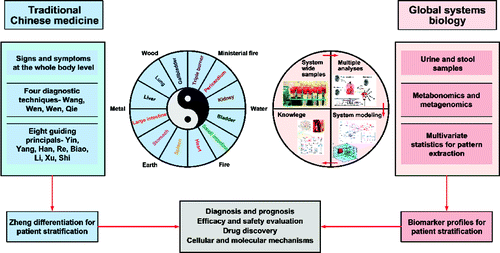Toward new drugs for the human and non-human cells in people

Amid the growing recognition that only a small fraction of the cells and genes in a typical human being are human, scientists are suggesting a revolutionary approach to developing new medicines and treatments to target both the human and non-human components of people. That's the topic of an article, which reviews work relating to this topic from almost 100 studies, in ACS' Journal of Proteome Research.
Liping Zhao, Jeremy K. Nicholson and colleagues explain that human beings have been called "superorganisms" because their bodies contain 10 percent human cells and 90 percent microbes that live mainly in the intestines. "Super" in that sense means "above and beyond." Scientists thus are viewing people as vast ecosystems in which human, bacterial, fungal and other cells interact with each another. Microbes, for instance, release substances that determine whether human genes turn on or off and influence the immune system's defenses against disease. And populations of microbes in the body change with changes in diet, medications and other factors.
"This superorganism view of the human body provides a complete new systems concept for managing human health at the clinically relevant whole body level," say the authors. They term it "one of the most significant paradigm shifts in modern medicine." The article describes how this revolutionary change is fostering emergence of an approach called "functional metagenomics" for developing new medicines. It opens the possibility of sustaining health and treating disease with medicines and other substances that target non-human cells in the body. The article notes that many substances in traditional Chinese medicines may work in that way.
More information: “Targeting the Human Genome-Microbiome Axis for Drug Discovery: Inspirations from Global Systems Biology and Traditional Chinese Medicine”, J. Proteome Res., 2012, 11 (7), pp 3509–3519. DOI: 10.1021/pr3001628
Abstract
Most chronic diseases impairing current human public health involve not only the human genome but also gene–environment interactions, and in the latter case the gut microbiome is an important factor. This makes the classical single drug–receptor target drug discovery paradigm much less applicable. There is widespread and increasing international interest in understanding the properties of traditional Chinese medicines (TCMs) for their potential utilization as a source of new drugs for Western markets as emerging evidence indicates that most TCM drugs are actually targeting both the host and its symbiotic microbes. In this review, we explore the challenges of and opportunities for harmonizing Eastern–Western drug discovery paradigms by focusing on emergent functions at the whole body level of humans as superorganisms. This could lead to new drug candidate compounds for chronic diseases targeting receptors outside the currently accepted “druggable genome” and shed light on current high interest issues in Western medicine such as drug–drug and drug–diet–gut microbial interactions that will be crucial in the development and delivery of future therapeutic regimes optimized for the individual patient.
















